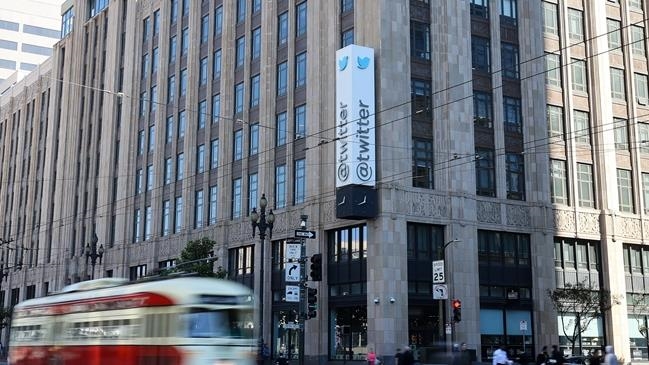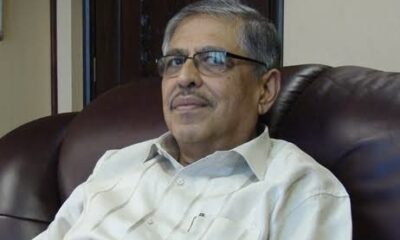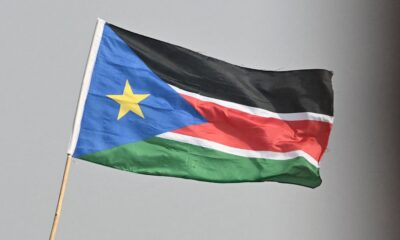Sci & Tech
Twitter Files: Secret Blacklists

Twitter built secret blacklists to restrict the visibility and reachability of “disfavored” accounts and tweets, independent journalist Bari Weiss said on Friday, posting part two of the Twitter Files, a set of internal company documents.
Titling the post “Twitter’s Secret Blacklists,” Weiss, who runs The Free Press, tweeted: “A new #TwitterFiles investigation reveals that teams of Twitter employees build blacklists, prevent disfavored tweets from trending, and actively limit the visibility of entire accounts or even trending topics—all in secret, without informing users.”
She said Twitter once had a mission “to give everyone the power to create and share ideas and information instantly, without barriers,” but along the way, barriers were erected.
Twitter, however, denied that it places accounts on blacklist, she said, adding that in 2018, Vijaya Gadde, then head of legal policy and trust, and Kayvon Beykpour, head of product, said: “We do not shadow ban,” “And we certainly don’t shadow ban based on political viewpoints or ideology.”
“What many people call ‘shadow banning,’ Twitter executives and employees call ‘Visibility Filtering’ or ‘VF.’,” the journalist who has written for the New York Times and Wall Street Journal, explained, noting that number of “high-level sources” confirmed what the phrase means.
“’Think about visibility filtering as being a way for us to suppress what people see to different levels. It’s a very powerful tool,’ one senior Twitter employee told us,” she stressed, adding: “’VF’ refers to Twitter’s control over user visibility.”
“It used VF to block searches of individual users; to limit the scope of a particular tweet’s discoverability; to block select users’ posts from ever appearing on the ‘trending’ page; and from inclusion in hashtag searches,” she said.
“We control visibility quite a bit. And we control the amplification of your content quite a bit. And normal people do not know how much we do,’ one Twitter engineer told us,” she underlined, pointing out that two other Twitter employees also confirmed it.
She said the group that decided whether to limit the reach of certain users was the Strategic Response Team – Global Escalation Team, or SRT-GET, which generally dealt with around 200 “cases” a day.
Weiss said there was another level beyond that, the ‘Site Integrity Policy, Policy Escalation Support,’ or ‘SIP-PES.’ This “secret group” included Gadde, Global Head of Trust & Safety Yoel Roth, subsequent CEOs Jack Dorsey and Parag Agrawal, and others.
“This is where the biggest, most politically sensitive decisions got made. ‘Think high follower account, controversial,’ another Twitter employee told us. For these ‘there would be no ticket or anything,’” she wrote.
Underscoring that their investigation still continues as the documents “cannot tell the whole story,” Weiss called on former Twitter employees to reach out to her or her team to reveal more about what happens behind the scene.
The first set of documents detailed Twitter’s decision to restrict an October 2020 New York Post story on the Hunter Biden laptop controversy.
Billionaire Elon Musk, who completed his takeover of Twitter in October, retweeted Weiss’ post, saying: “The Twitter Files, Part Deux!!” along with popcorn emojis.
In another tweet, he said Twitter is working on a software update that will “show your true account status, so you know clearly if you’ve been shadowbanned, the reason why and how to appeal.”
Kenya Insights allows guest blogging, if you want to be published on Kenya’s most authoritative and accurate blog, have an expose, news TIPS, story angles, human interest stories, drop us an email on [email protected] or via Telegram
-

 Business2 weeks ago
Business2 weeks ago‘They’re Criminals,’ Popular Radio Presenter Rapcha The Sayantist Accuses Electric Bike Firm Spiro of Fraudulent Practices
-

 Business2 weeks ago
Business2 weeks agoIt’s a Carbon Trading Firm: What Kenyans Need to Know About Spiro’s Business Model Amid Damning Allegations of Predatory Lending
-

 Business1 week ago
Business1 week agoManager Flees Safaricom-Linked Sacco As Fears Of Investors Losing Savings Becomes Imminent
-

 News2 weeks ago
News2 weeks agoWoman Accused in High Defamation Blames AI As Case Exposes How Mombasa Billionaire Mohamed Jaffer Allegedly Sponsored Smear Campaign Linking Joho’s Family To Drug Trafficking
-

 Investigations2 weeks ago
Investigations2 weeks agoDisgraced Kuscco Boss Arnold Munene Moves To Gag Media After Expose Linking Him To Alleged Sh1.7 Billion Fraud
-

 Africa2 weeks ago
Africa2 weeks agoDisgraced Oil Trader Idris Taha Sneaks Into Juba as Empire Crumbles
-

 Investigations2 weeks ago
Investigations2 weeks agoFraud: How Sh235 Million Donor Cash For Nyamira Residents Was Embezzled Through Equity Bank Under Governor Nyaribo’s Watch
-

 Investigations2 weeks ago
Investigations2 weeks agoIntelligence Report Links Budding Politician James Mabele Magio To International Scammers Ring










